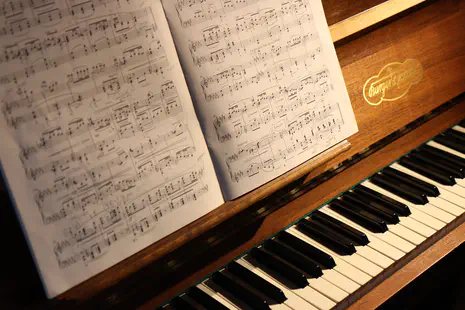Scales in music theory are not just bounded by Major vs Minor distinctions. It turns out that all scales can be represented via modes. Modes are just another way of producing a certain tone/mood commonly associated with a happy (Major) or melancholic (Minor) sound.
After years of learning music theory for certification tests, I came across a easy way to calculate different modes based on the given note. Since mode calculations are quite theoretical, I want to share a more practical way of calculations, especially for students going through music examinations.
The Different Modes
As a refresher, let’s go over the 7 different modes in music theory. It is very important to memorize the order listed below:
- Ionian (The Major Scale)
- Dorian
- Phrygian
- Lydian
- Mixolydian
- Aeolian
- Locrian
All of the scale modes are part of the diatonic scale. This just means that every scale has 2 half step and 5 whole step intervals.
In many music theory books, the standard way to teach modes is to memorize the locations of half-steps for each type of mode. For example, the Dorain Mode contains half-steps between notes 2-3 and 6-7. The Aeolian Mode, on the contrary, contains half-steps between notes 2-3 and 5-6.
The problem with this method is that there’s no systematic way on remembering the half-step order besides purely memorizing the whole system. For instance, Dorian Mode is associated with notes 2-3 and 6-7 and the next mode after (Phyrgian Mode) is associated with notes 1-2 and 5-6, but Lydian Mode jumps to 4-5 and 7-8.
I personally prefer a more systematic way of calculations. As such, I use a counting method to construct different mode scales.
The Shortcut Method
I mentioned previously that it’s important to memorize the order of the scale modes. This is crucial in using the counting method. In a mathematical sense, let the list order start from the number 1. For example, Ionian is associated with 1 and Phrygian is associated with 3.
These numbers will then represent the number of white keys you count backwards from your given note. Once you land on your final key, you take the Major Key Signature of that key and apply it to the scale of your given note.
This is much easier to see with examples, so I will go over a few.
Dorian Mode on D
Following the steps I outlined earlier, we first determine the number of notes we need to count. We can see from the list I posted earlier that Dorian is associated with 2. This means that we need to count 2 white keys backwards starting from D. If you take a look at a keyboard, you can see that 2 white keys starting on D is C.
Next we take C Major’s key signature and apply it on the scale on D. Since C Major has no sharps and flats, Dorian on D is the following:
D, E, F, G, A, B, C, D
Lydian Mode on C
Let’s try another example. As with what I said earlier:
- Lydian Mode is associated with 4 white keys
- 4 white keys before (and including) C is G
- G Major has 1 Sharp (F)
From steps 1 to 3, we get our final scale of:
C, D, E, F sharp, G, A, B, C
Locrian Mode on F (Sharp)
- Locrian Mode is associated with 7 white keys
- 7 white keys before (and including) F is G
- G Major has 1 Sharp (F)
From steps 1 to 3, we get our final scale of:
F sharp, G, A, B, C, D, E, F sharp
Phrygian Mode on A
Okay, last one!
- Phrygian Mode is associated with 3 white keys
- 3 white keys before (and including) A is F
- F Major has 1 flat (B)
From steps 1 to 3, we get our final scale of:
A, B flat, C, D, E, F, G, A
And that’s it! Hopefully this technique helps most of you during your music exam!
